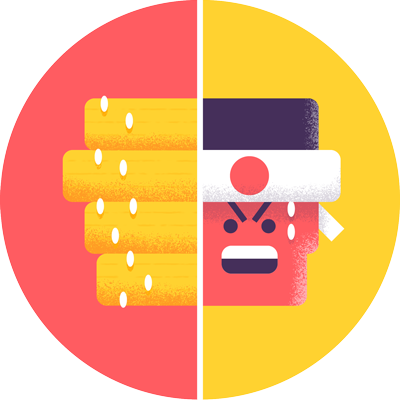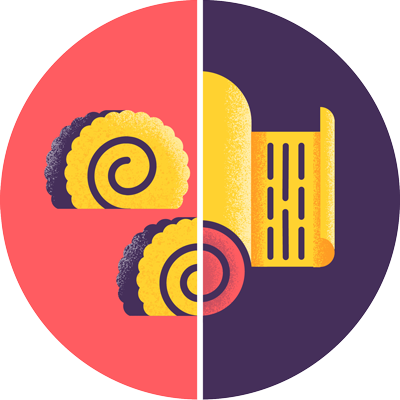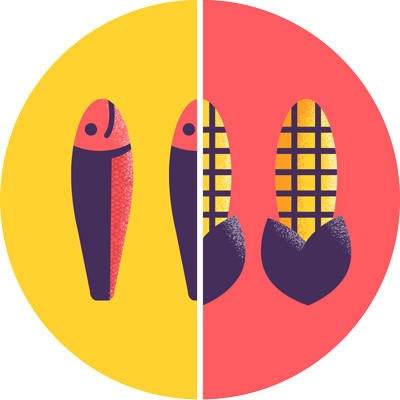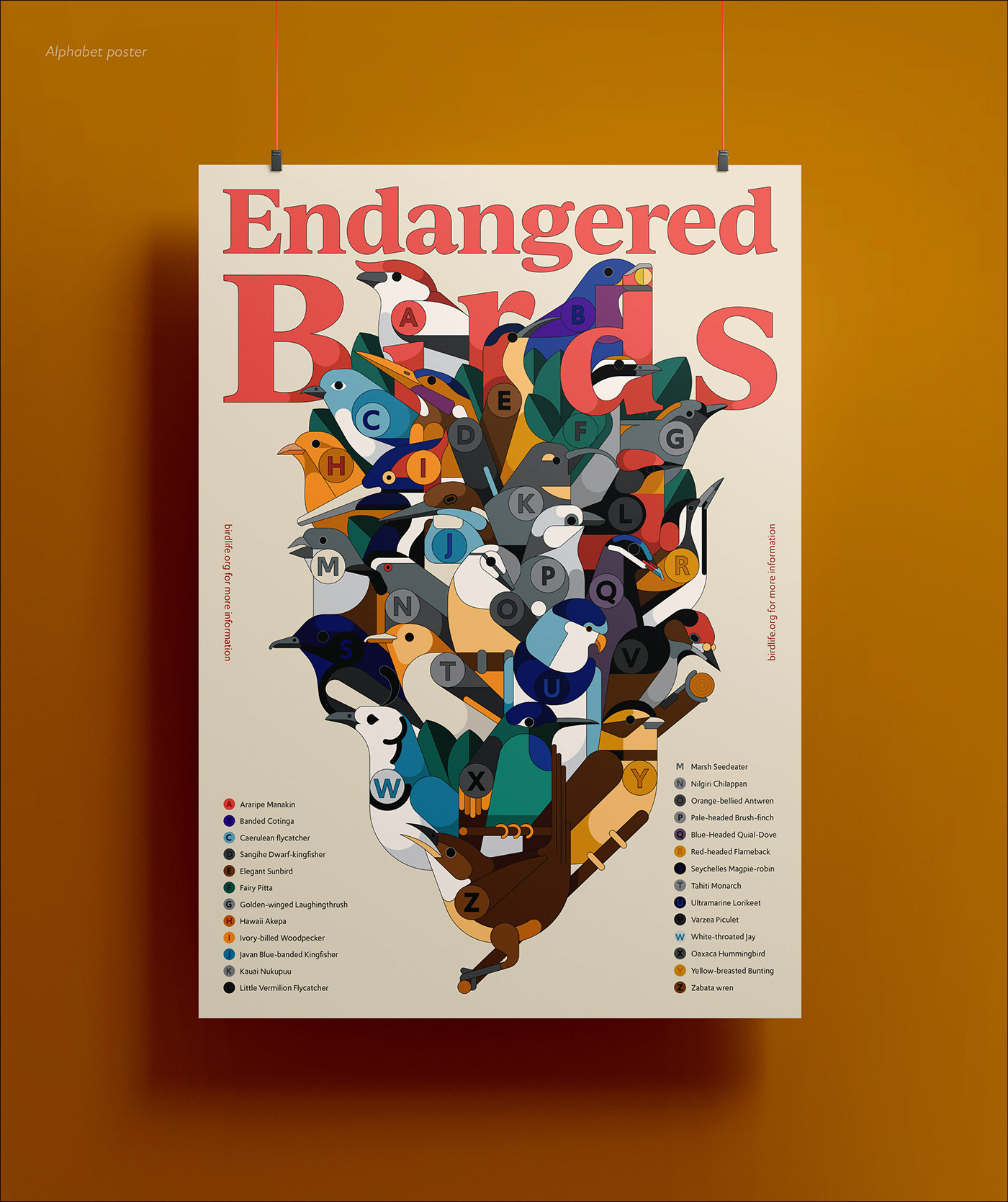Spot illustrations created for Michelin Guide Singapore, introducing the hidden meanings behind Osechi Ryori (Japanese New Year Food). Read the article here.

Ebi (エビ, Shrimp)
Ebi are a symbol of longevity, because their curved body looks like the bent back of the elderly.

Kazunoko (数の子, Herring Roe)
Kazunoko contains many tiny eggs in a tight cluster and symbolises fertility.

Konbu-maki (昆布巻き, Seaweed Rolls)
The word Konbu is a Japanese homonym for the word Yorokobu (喜ぶ), meaning 'joy'.

Gobo (ごぼう, Burdock Root)
Gobo has long, tough fibers, which symbolise perseverance.

Datemaki (伊達巻, Sweet Rolled Omelette)
Because Datemaki resembles paper scrolls, the dish is said to represent knowledge and learning.

Kuromame (黒豆, Black Beans)
Kuromame are a symbol of hard work, because the Japanese have a saying: mameni-hataraku (マメに働く, work hard).
It also connotes being healthy enough to work hard.

Kotaku Kamaboko (紅白蒲鉾, Red and White Fish Cake)
The shape of Kamaboko is said to resemble the first sunrise of the New Year.
In addition, red is believed to be a talisman against evil, while white signifies purity.

Kuri-kinton (栗きんとん, Sweet Mashed Chestnuts)
The word 'kinton' means golden dumpling and is used to symbolise wealth and fortune.

Tazukuri (田作り, Candied Sardines)
Tazukuri is a symbol of abundant harvest, because the fish were historically used to fertilize rice fields.





